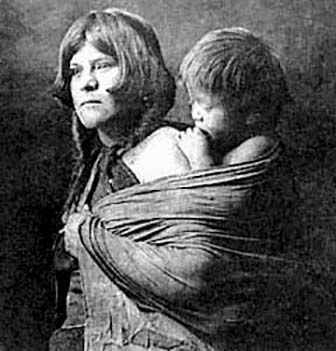Baby Papoose
Save your back with your own baby papoose to carry your baby around easily.

Today's modern day infant slings and backpacks can be traced back to Native American Indian practices of carrying their infants on their backs. Made from animal skins, women would make slings that allowed them to carry their infants with them but leave their hands free for work. Infant carriers today go by many different names, but a baby papoose is a term known to many.
The word papoose is actually an English word borrowed from Native American Indians meaning a Native American Indian child. Papoose also refers to the actual sling used to carry an infant. Though the modern day baby papoose is typically made of synthetic material, there are manufacturers who make them from sheepskin. Regardless of the name by which the infant carrier or sling goes by, the baby papoose is an age-old concept for infant transport and also the center of slight controversy.
Many experts believe that a colicy infant benefits from being carried in a baby papoose because the sheer closeness to the mother combined with her movement helps to soothe the baby. However, many caution parents who use a baby papoose or sling, especially those worn in the front, that they are imposing a safety hazard on their child. If the parent should trip and fall while wearing a sling or carrier, they could crush the baby and cause injury.
Though in early Native American Indian cultures, safety was not governed by any particular entity, today’s manufacturers of infant slings, carriers, or the baby papoose are required to implement certain safety standards. When using an infant sling or baby papoose, be sure to adhere to the manufacturer’s guidelines regarding weight limit capacity and use. Always use caution when using any carrier, whether front or back to avoid potential injury to both yourself and your baby.
Related Stories:
Baby Papoose Articles Home PageThe following lists catalog the specific articles, stories, legends and research materials of this website.
American Indian Topics | American Indian Products | American Indian Tribes
Native American Topics | Indigenous Peoples’ Literature
